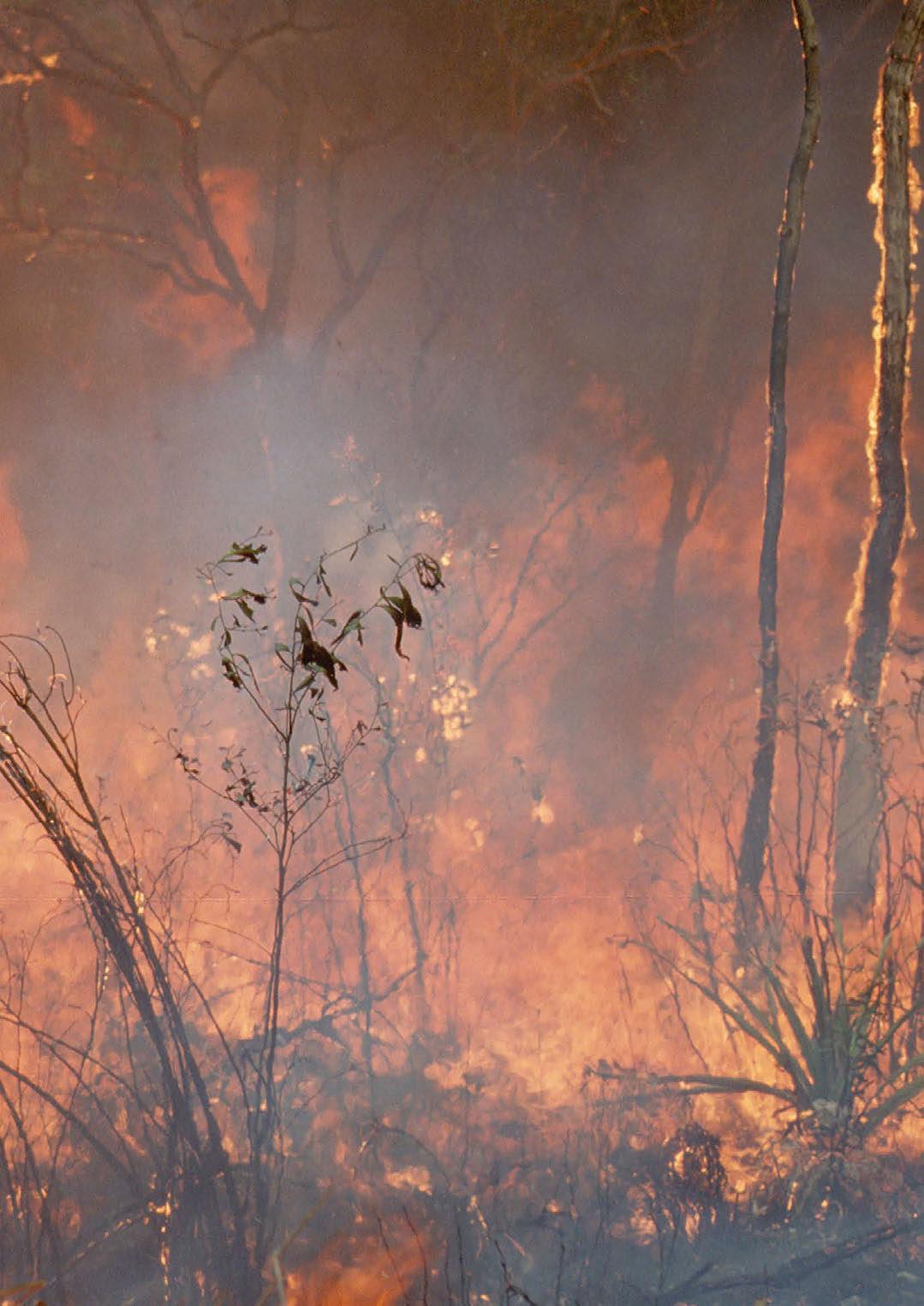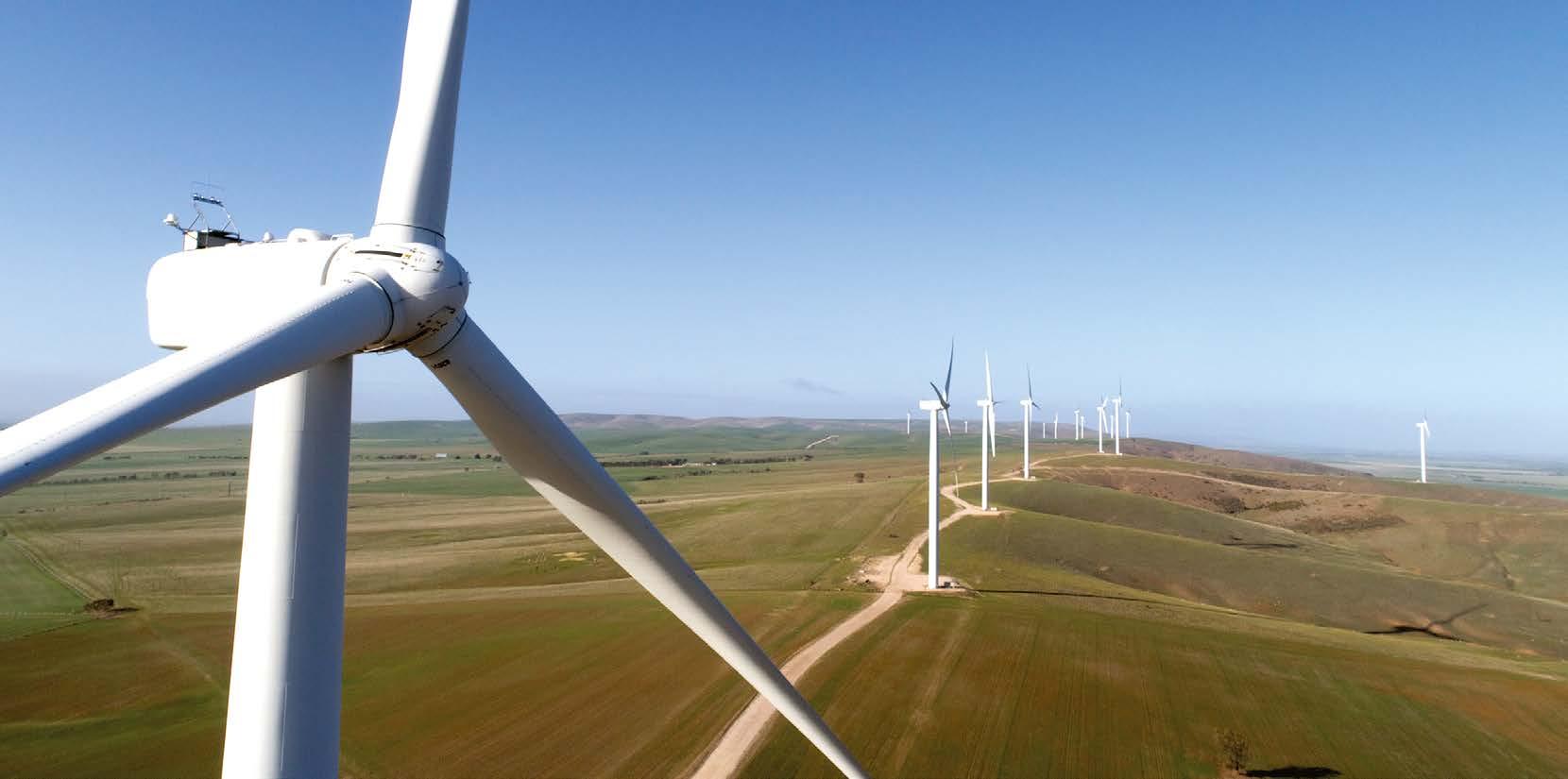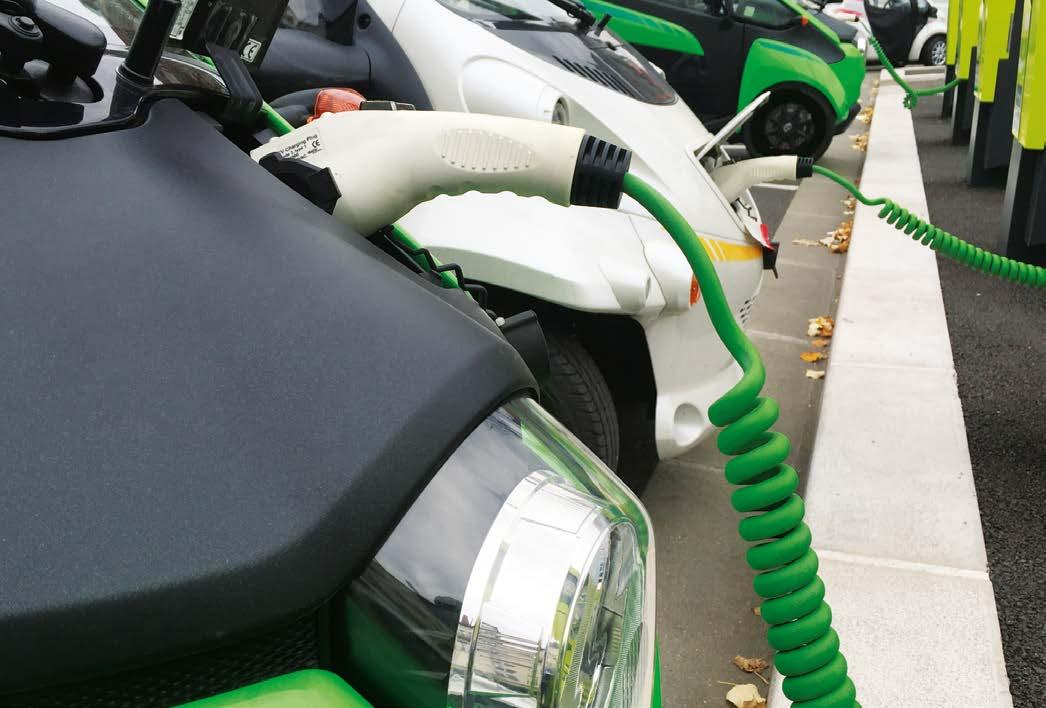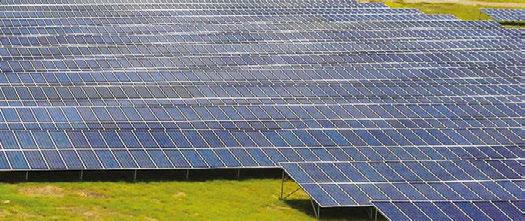PPAs
The growth of PPAs … and shrinking carbon footprint Last year saw a steep rise in the number of corporations signing renewable energy Power Purchase Agreements, and a continuation of the trend is key to stimulating future investment in the renewables industry which is edging closer to the 2020 end date for the Large Scale Renewable Energy Target.
JUST A FEW YEARS AGO Power Purchase Agreements were a rare commodity. Today they are showing exponential growth, not just in Australia but also around the globe. According to Bloomberg New Energy Finance corporations across the world last year entered into agreements for 13.4 GW of renewable energy capacity which was more than double that of the 6.1 GW recorded in 2017. The US commanded more than 60 per cent of the 2018 capacity by signing 8.5 GW, treble that of the previous year, and companies in the Asia-Pacific signed a record 2 GW, led by India’s 1.3 GW. Here in Australia since 2016 corporate PPAs have supported projects with a combined capacity of nearly 3600 MW, of which about 3000 MW enabled investment in new projects according to renewable energy economics advisor Energetics. Their corporate renewable energy PPA deal tracker listing agreements larger than 10 MW reveals a 50 per cent growth spurt during 2018, approaching 2000 MW of projects achieved and exponential growth of PPAs since 2016. Many big names appear among the list of significant PPA signatories, heralding the trend toward a lower emissions, renewables-led future within the corporate sector.
Corporate PPAs and renewable projects In late 2017 Telstra, ANZ and others inked a 10-year deal to buy more than half of the power generated by the 226 MW first stage of the Murra Warra Wind Farm in western Victoria. The price is thought to be in the sub $55/MWh range, similar to that of Origin
CWP’s recently completed Sapphire Wind Farm in northern NSW is supplying energy for Commonwealth Bank operations
22 AUTUMN 2019
Energy’s deal with Goldwind Australia’s 530 MW Stockyard Hill wind farm. Although financials are rarely disclosed, another recent public indicator is the $60/MWh deal by the University of Queensland which has equity investment in a $125 million 64 MW solar farm on Queensland’s Southern Downs. UQ is one of many universities turning to PPAs, among them UNSW, Monash and the University of Melbourne. Staying in regional Victoria, the $350 million Neoen’s Bulgana Green Power Hub 194 MW wind farm combined with a 20 MW/34 MWh lithium-ion battery in Stawell is on track to provide 100 per cent renewable energy to Australia’s largest greenhouse being built by Nectar Farms. PPA signings during 2017 brought capacity to 1400 MW; during 2018 the rise in corporate PPAs brought capacity to around 2000 MW, among them Sydney Metro’s 15-year PPA with First Solar’s 87 MW Beryl Solar Farm in mid-western NSW due for completion mid 2019. Packaging giant Orora also turned to “fair dinkum” renewable energy, signing a second 10-year PPA with Victoria’s 228 MW Lal Lal wind farm due for completion this year. The company currently taps into the 57 MW Clements Gap wind farm to power 100 per cent of South Australian operations. The list goes on. Mars Australia is transiting to 100 per cent renewables, signing a 20-year PPA with Total Eren to source power for six Australian factories and two offices from a 200 MW Kiamal solar farm in Victoria on its mid year completion. The deal marks one of the longest known PPA terms signed to date, many are in the region of 12 years such as that between Carlton & United Breweries and German renewable energy developer BayWa r.e.’s 112 MW Karadoc solar farm in northern Victoria. And in another outstanding example the Commonwealth Bank, an RE100 signatory, is now sourcing 65 per cent of its electricity needs from renewable energy having signed a 12-year PPA with CWP’s recently completed 270 MW Sapphire Wind Farm in northern NSW and will receive 96,000 MWh annually. Chief executive of CWP Renewables Alex Hewitt commented “Commonwealth Bank is taking the lead here as other large corporate energy users are starting to actively seek green energy direct from the generator. To have Commonwealth Bank as one of our direct buyers reinforces the fact dispatchable low-cost renewable energy is viable and economical.” By mid 2018 Victorian projects in the region of 1400 MW accounted for more than half of project
















